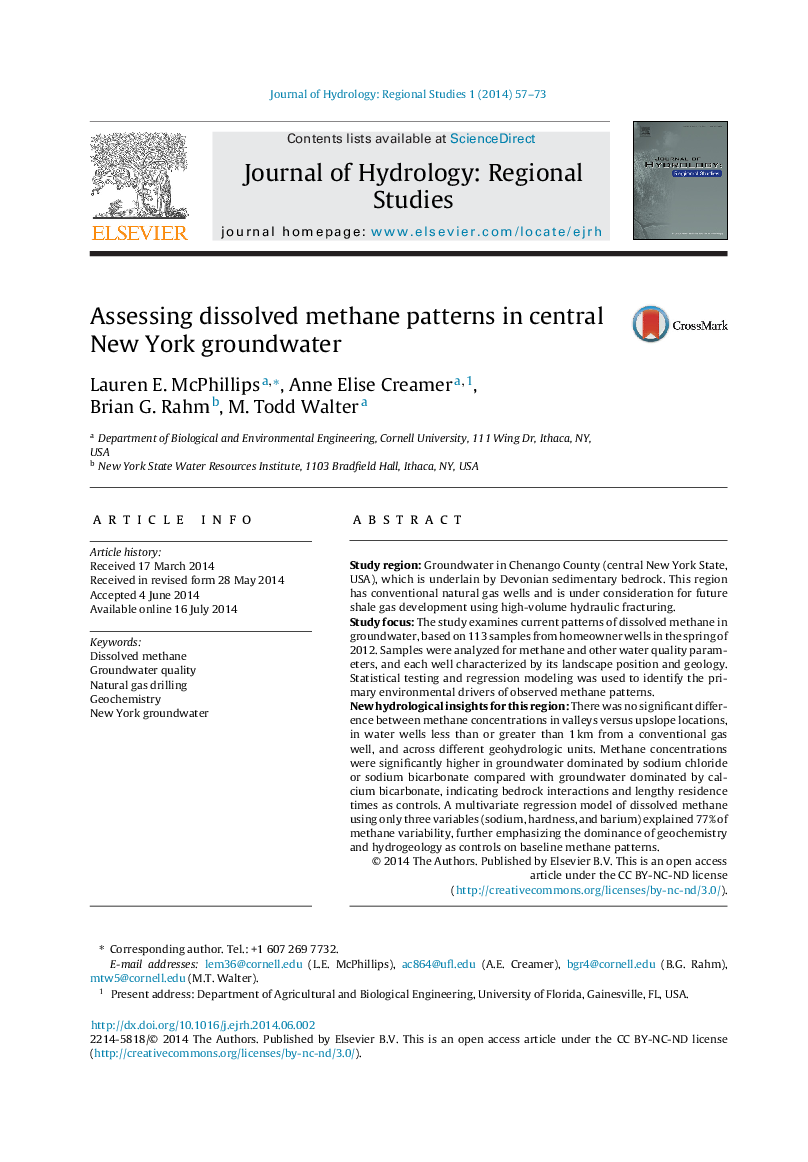| Article ID | Journal | Published Year | Pages | File Type |
|---|---|---|---|---|
| 4435336 | Journal of Hydrology: Regional Studies | 2014 | 17 Pages |
•Groundwater quality (methane & dissolved solids) was surveyed in central New York.•Dissolved methane patterns were driven by hydrogeology and geochemistry.•A regression model with 3 geochemical parameters explained 77% of methane variation.
Study regionGroundwater in Chenango County (central New York State, USA), which is underlain by Devonian sedimentary bedrock. This region has conventional natural gas wells and is under consideration for future shale gas development using high-volume hydraulic fracturing.Study focusThe study examines current patterns of dissolved methane in groundwater, based on 113 samples from homeowner wells in the spring of 2012. Samples were analyzed for methane and other water quality parameters, and each well characterized by its landscape position and geology. Statistical testing and regression modeling was used to identify the primary environmental drivers of observed methane patterns.New hydrological insights for this regionThere was no significant difference between methane concentrations in valleys versus upslope locations, in water wells less than or greater than 1 km from a conventional gas well, and across different geohydrologic units. Methane concentrations were significantly higher in groundwater dominated by sodium chloride or sodium bicarbonate compared with groundwater dominated by calcium bicarbonate, indicating bedrock interactions and lengthy residence times as controls. A multivariate regression model of dissolved methane using only three variables (sodium, hardness, and barium) explained 77% of methane variability, further emphasizing the dominance of geochemistry and hydrogeology as controls on baseline methane patterns.
Graphical abstractFigure optionsDownload full-size imageDownload as PowerPoint slide
